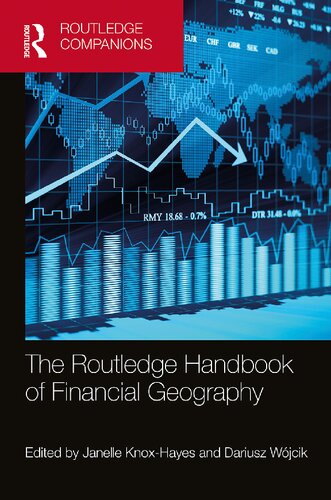

Most ebook files are in PDF format, so you can easily read them using various software such as Foxit Reader or directly on the Google Chrome browser.
Some ebook files are released by publishers in other formats such as .awz, .mobi, .epub, .fb2, etc. You may need to install specific software to read these formats on mobile/PC, such as Calibre.
Please read the tutorial at this link. https://ebooknice.com/page/post?id=faq
We offer FREE conversion to the popular formats you request; however, this may take some time. Therefore, right after payment, please email us, and we will try to provide the service as quickly as possible.
For some exceptional file formats or broken links (if any), please refrain from opening any disputes. Instead, email us first, and we will try to assist within a maximum of 6 hours.
EbookNice Team

Status:
Available4.5
19 reviewsThis handbook is a comprehensive and up to date work of reference that offers a survey of the state of financial geography. With Brexit, a global recession triggered by the COVID-19 pandemic, as well as new financial technology threatening and promising to revolutionize finance, the map of the financial world is in a state of transformation, with major implications for development.
With these developments in the background, this handbook builds on this unprecedented momentum and responds to these epochal challenges, offering a comprehensive guide to financial geography. Financial geography is concerned with the study of money and finance in space and time, and their impacts on economy, society and nature. The book consists of 29 chapters organized in six sections: theoretical perspectives on financial geography, financial assets and markets, investors, intermediation, regulation and governance, and finance, development and the environment. Each chapter provides a balanced overview of current knowledge, identifying issues and discussing relevant debates. Written in an analytical and engaging style by authors based on six continents from a wide range of disciplines, the work also offers reflections on where the research agenda is likely to advance in the future.
The book’s key audience will primarily be students and researchers in geography, urban studies, global studies and planning, more or less familiar with financial geography, who seek access to a state-of-the art survey of this area. It will also be useful for students and researchers in other disciplines, such as finance and economics, history, sociology, anthropology, politics, business studies, environmental studies and other social sciences, who seek convenient access to financial geography as a new and relatively unfamiliar area. Finally, it will be a valuable resource for practitioners in the public and private sector, including business consultants and policy-makers, who look for alternative approaches to u